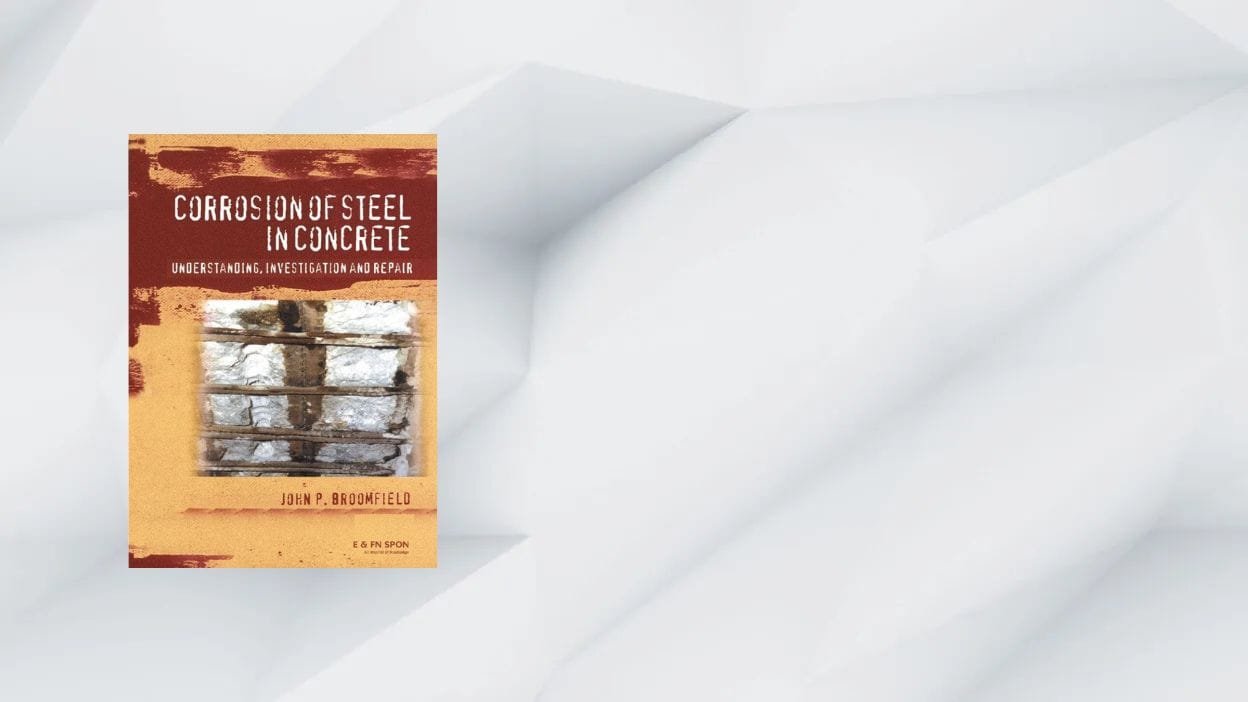Corrosion of steel in concrete is one of the most critical challenges in civil engineering. Steel reinforcement is essential for providing strength and durability to concrete structures, but environmental and chemical exposure can lead to corrosion, reducing structural integrity and posing safety risks.
For engineers, contractors, and students, accessing reliable resources such as a Corrosion of Steel in Concrete PDF is essential to understand the causes, impacts, and preventive measures. This guide explores the science behind steel corrosion in concrete, practical prevention strategies, and trusted sources for free, ethical PDF downloads.
What is Corrosion of Steel in Concrete?
Corrosion occurs when steel reinforcement (rebar) inside concrete reacts chemically with oxygen, moisture, or chlorides. This electrochemical reaction produces rust, which expands in volume and causes the surrounding concrete to crack. Over time, this weakens the structure and shortens its lifespan.
Understanding corrosion mechanisms is vital for designing durable concrete structures and extending their service life.
Main Causes of Steel Corrosion in Concrete
1. Environmental Factors
- High humidity and continuous water exposure accelerate corrosion.
- Chloride penetration from de-icing salts or seawater attacks the steel.
2. Chemical Reactions
- Carbonation reduces the pH of concrete, weakening its protective properties.
- Chloride-induced corrosion occurs when salts penetrate cracks or porous areas.
3. Human Impact
- Poor construction practices such as inadequate concrete cover.
- Use of low-quality materials and improper mixing ratios.
Impact of Steel Corrosion on Concrete Structures
- Structural Integrity Loss – Corroded steel weakens the load-bearing capacity.
- Increased Maintenance Costs – Repairs and retrofitting are expensive.
- Safety Hazards – Severe corrosion can lead to catastrophic failures in bridges, buildings, and infrastructure.
How to Prevent Corrosion in Steel-Reinforced Concrete
- Protective Coatings
- Apply epoxy or zinc coatings to rebars to block moisture and oxygen.
- Concrete Additives
- Use corrosion inhibitors and high-performance concrete mixes to minimize chloride ingress.
- Cathodic Protection
- Install sacrificial anodes or impressed current systems to control electrochemical reactions.
- Design Best Practices
- Ensure adequate concrete cover and optimal water-cement ratios during construction.
Why PDF Guides Are Important
Corrosion of Steel in Concrete PDFs often contain diagrams, case studies, testing procedures, and step-by-step solutions, making them highly valuable for academics, researchers, and field engineers.
Where to Find Free Corrosion of Steel in Concrete PDFs
- University Libraries – Many provide free digital access to students and researchers.
- ResearchGate / Academia.edu – Platforms hosting scholarly articles.
- Government Portals – Agencies like NIST or EPA publish free technical documents.
- Open Access Journals – Peer-reviewed research available without subscription.
Topics Commonly Covered in Corrosion PDFs
- Mechanisms of steel corrosion in concrete.
- Case studies of corrosion-related failures.
- Prevention and rehabilitation methods.
- International codes and standards for durability.
Important Standards and Codes
- ASTM Standards – Testing methods and material specifications.
- ACI Guidelines – Best practices for corrosion prevention from the American Concrete Institute.
- British Standards (BS) – Widely recognized global standards for reinforced concrete durability.
Science Behind Corrosion in Reinforced Concrete
- Electrochemical Reactions – Anodic and cathodic processes occur in the presence of an electrolyte.
- Carbonation – Lowers alkalinity, allowing corrosion to start.
- Chloride Attack – Breaks down the steel’s passive protective layer.
Common Corrosion Testing Methods
- Half-Cell Potential Testing – Determines corrosion likelihood.
- Chloride Content Analysis – Measures chloride levels in concrete.
- Electrochemical Impedance Spectroscopy – Evaluates coating durability and rebar condition.
Repairing Corroded Steel in Concrete
- Surface Repairs – Remove rust, clean rebar, and reapply protective coatings.
- Structural Rehabilitation – Replace heavily damaged rebars.
- Advanced Strengthening – Use fiber-reinforced polymers (FRP) for added support.
Innovations in Corrosion Prevention
- Self-Healing Concrete – Bacteria-based technology seals cracks automatically.
- Nanotechnology – Nano-coatings increase corrosion resistance.
- Corrosion-Resistant Alloys – Stainless steel rebars for improved durability.
Benefits of Using Free PDFs for Learning
- Accessibility – Downloadable anywhere, anytime.
- Cost Savings – No need for expensive textbooks.
- Eco-Friendly – Reduces paper usage through digital formats.
FAQs – Corrosion of Steel in Concrete
Q1: Where can I find reliable free corrosion PDFs?
A: University repositories, open-access journals, and government portals.
Q2: Is it legal to download books for free?
A: Only from authorized or open-access platforms.
Q3: Can corrosion be completely prevented?
A: No, but proper protection and design can significantly reduce it.
Q4: How to check if a PDF is credible?
A: Verify the author’s credentials and publishing source.
Q5: Why is corrosion knowledge important for civil engineers?
A: To design safe, durable, and cost-effective infrastructure.
Q6: What are common tools for corrosion testing?
A: Half-cell potential meters, chloride testing kits, and impedance spectroscopy devices.
Conclusion
Understanding corrosion of steel in concrete is essential for civil engineers, construction professionals, and researchers aiming to build safe, long-lasting structures. By using ethical, free PDF resources, professionals can stay informed about the latest techniques, prevention strategies, and global standards in corrosion management.

